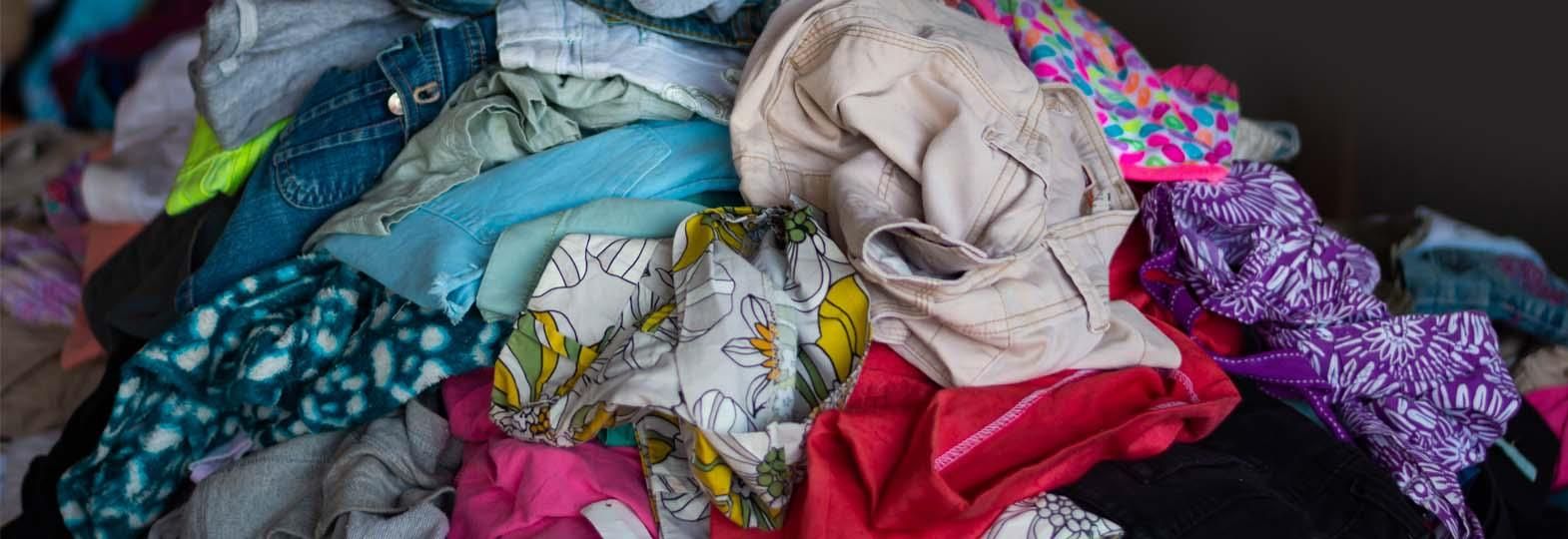People who have grown up in India remember the Gujarati style saree clad woman, balancing a basket of utensils on her head and a potli of old clothes on her shoulder. Hawking goods through the lanes and by lanes in a hot afternoon, she would spread her merchandise on the angan of the old Indian households. The women of those households would bargain and haggle about the number of utensils that could be bartered in exchange for old clothes.
That woman belonged to the Waghri community. They originate from the regions of Gujarat and Rajasthan. Nomadic in nature, these communities’ main livelihood was through collecting and selling old clothes. The women of this community played a central role in their business. They roamed from neighbourhood to neighbourhood, knocking on the doors to collect old clothes in exchange for steel and aluminium utensils. These old clothes were then sorted, washed and mended to be sold in the second-hand markets or mandi. These mandis are scattered across the country and are known to the locals as the ‘Chindi Bazaars’. The chindi bazaars operate as flea markets or ‘chor bazaars’ in the wee hours of the night. From Subhash Nagar ‘Chor Bazaar’ of Madhya Pradesh to Raghubir Nagar ‘Ghoda Mandi’ of Delhi, the Waghri trade echoes.
The clothes are sold to the middlemen of second-hand clothing traders, construction workers, slum dwellers etc. Sarees, trousers, shirts etc are sold at anything between ₹5 to ₹50 per piece. The clothes that are too damaged to be sold as second-hand garments are sent to the rug makers on the basis of weight.
These “invisible recyclers” were once categorised as criminals by the British Raj under the Criminal Tribes Act of 1871. Though the Act was revoked by the independent Indian government in 1952, the stigma remains. The people of this community are often stopped by the municipality and law enforcement authorities to search their baggage. Sometimes, they end up paying a petty bribe to be left alone.
However, with the changing times, these women seem to be disappearing into the shadows of the modern urban lifestyle. The new-age consumer does not have time to bargain for utensils. With the double-income families, there is no one home in the afternoons to look at their merchandise.
The low-quality fast fashion clothes also do not last as much that they could be sold in the second-hand markets. The flourishing second-hand markets often find their merchandise from illegally imported clothes. In 2008, the Indian government had put a ban on the import of second-hand clothes to protect domestic garment manufacturers. The import of only mutilated garments was partially allowed for the raw material for the home furnishing industry of Panipat for making blankets, rugs and pillow stuffing. However, at Kandla Special Economic Zone (SEZ) of Gujarat, loads of imported non-mutilated second-hand clothes are often found hidden behind the mutilated clothes. According to the Clothing Manufacturers Association of India, approximately ₹550 crore of textile goods illegally enter India through its ports and airports every year.
Few investors in Kandla SEZ claim that the imported second-hand clothes serve as an option for the poor. However, these imported clothes often find their way to Sarojini Nagar in Delhi or Linking Road in Mumbai, where the target market is middle-class and upper-middle-class college students. The shoppers of Sarojini Nagar or Colaba are definitely not the poor the Kandla investors claim to reach out to. The informal Waghri trade, on the other hand, brings affordable second-hand garments to the rural and urban poor of India.
Despite ensuring that the country’s discarded clothes do not reach the landfill, the Waghri community is not recognised by the modern textile recyclers. The demonetisation of 2016 also served as a blow to this community when the cash-based model started to fail. The middlemen began to pick up the clothes on credit due to a lack of cash, a huge amount of which was never paid. The hard-working women of the community often saved the money in their kitchen jars, the cash notes of ₹500 which were cancelled soon after. Without bank accounts, the livelihood of the community failed. COVID-19 was the next challenge that the Waghri traders faced. The social distancing norms and closure of all marketplaces made it hard for the business to survive.
But the community evolves as it moves forward. The maids of the upper-class households now barter the hand-me-down clothes for utensils with the Waghri women. Plastic containers and utensils have found their way into their baskets. They directly provide the old sarees and clothes to the vineyard farmers and industry workers. Contacts are established with orphanages that sell them donated clothes.
For ages, the Waghri community have been flag bearers of the second-hand clothing market. They are not an agricultural community; they do not own lands in villages; they do not farm. But their future seems to be dwindling in this ever-changing and uncertain world. The high-rise apartments with strict security guards do not even allow them inside the premises. The children of the community study in the local government schools. The majority of the younger generation is shifting to other professions. Like many other indigenous tribes and communities of the country, the Waghris are also on the verge of losing their identity. The question is whether this community still has something unique to contribute to modern India or is it high time that they get assimilated with the rest of the society; whether the government should try to preserve their identity by providing them with a livelihood that is in line with their heritage or an alternate form of livelihood should be identified for them. Only time will answer such questions.











Comments